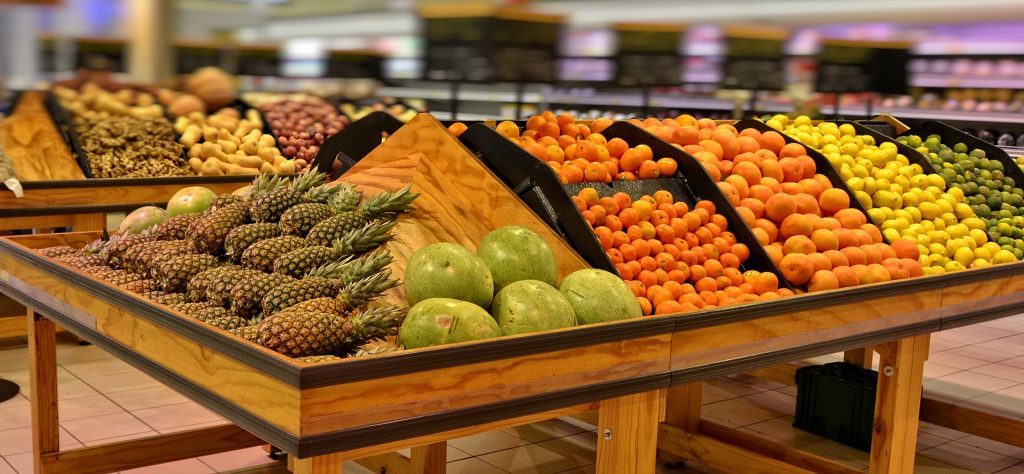Many years ago, I watched Tony Allan speak about Cheap Water and Expensive Water. There was a PowerPoint. I have looked for it but never found it. But the concept is clear.
The presentation made a distinction between ‘Expensive Water’—for which consumers are able and willing to pay the cost-price or above, and ‘Cheap Water’ —which is needed to produce affordable food for low-income consumers. This segment of the population is larger than many people realize, also in OECD countries.
Food security requires cheap water
Water used for domestic water supply for large cities or for industrial purposes are examples of ‘Expensive Water’. People typically pay 1 US$ or above per cubic meter—although this price includes piping it to their home and ensuring good quality. ‘Expensive Water’ is subject to the law of demand and supply. When costs go up, people will look for ways to lower consumption, for instance by installing low-flush toilets, removing lawns, or even reducing shower time. This may be inconvenient, but it does not really affect their life and existence.
Similarly, industrial water demand typically responds to price signals. Industries have proven adept at reducing their water footprint—when given enough time—through diverse innovations in water efficiency.
In addition, ‘Expensive Water’ can be supplied by non-conventional sources such as desalinated sea water or deep groundwater.
Thus, there is no global water crisis for ‘Expensive Water’. When major cities run out of water—as almost happened in Cape Town or Chennai a few years back—it is generally because of inadequate investments in water infrastructure or bad management, but not because of a fundamental shortage of water.
By contrast, a global water crisis for ‘Cheap Water’ is a real possibility.
This is because of the relation between ‘Cheap Water’ and food security. Specifically, cheap water is needed for producing cheap food for low-income consumers without access to subsidized food.
Some elaboration is needed.
First of all, food production involves huge volumes of water. For instance, it requires 1000 liters of water to produce 1kg of wheat and 10,000 liters to produce a kg of meat (these figures are indicative and differ per climate zone & production process & commodity; nevertheless, they provide a ballpark). By contrast, per capita water use for domestic purposes is quite low and is normally just a fraction of the water needed for food production.
With the above in mind, food consumers are categorized into:
- High-income consumers: they can pay for their food regardless whether it is grown with ‘Expensive Water’ or ‘Cheap Water’, or whether it is imported or grown domestically
- Low-income consumers in high and middle-income countries: their food is subsidized; either through direct subsidies to farmers or through food banks, flood stamps, price subsidies, or similar mechanisms
- Low-income consumers in low-income countries: they depend on domestically produced food, typically grown not far from where they live; this food must be grown with ‘Cheap Water’ else it becomes too expensive; the large rural population in low-income countries (and some middle-income countries) belongs to this category.

What does this mean for water resources management? Some observations:
- Bulk food for low-income consumers in low and middle-income countries cannot be produced with ‘Expensive Water’, such as desalinated sea water; it would be just too expensive
- ‘Cheap Water’ that is needed for agricultural purposes in low and middle-income countries cannot be subjected to market forces; it could deprive rural people of their livelihood and jeopardize their food security
- Rainwater is the ultimate source of ‘Cheap Water’; increasing the productivity of rainwater in low and middle-income countries—which is feasible but difficult—is key to achieving water and food security in these countries; (see the post on water security in the Nile Basin)
- Food trade provides food and water security in food-deficient high and middle-income countries; this is the essence of the virtual water concept introduced by Tony Allan; it is a non-political and proven mechanism; thus, it is unlikely that these countries will experience water crisis
- Water crisis is a realistic possibility in low-income countries with erratic rainfall and a large rural population
- Food waste represents a huge waste of water; precise figures are not available, but it is estimated at 50% or higher—including post-harvest losses, transport and processing losses, and food wasted at home; reducing food waste is a no-regret measure to achieve water security.
One more thing. These futuristic schemes you sometimes read about— growing staples with desalinated water pumped from the oceans to some inland region—are not only economically unviable, but also introduce high systemic risks. It would require lots of resources and highly-skilled people—as well as massive food subsidies. Without a huge budget, the system will collapse. If history is our guide, this will happen at some point in time (to quote Paul Krugman “stuff happens….”).
Thus, the hard task of improving rainwater productivity to achieve food security of low-income consumers seems unavoidable. And do not forget to reduce food waste!
Professor Tony Allan was interviewed by Martin Keulertz and Rachel Bahn in 2016. It is a highly interesting and insightful talk that covers food security, water security, food subsidies, the role of farmers as water and environmental managers—and much more.
